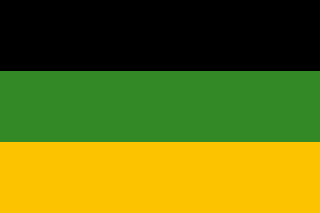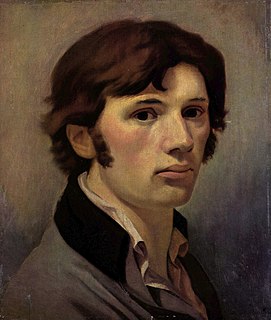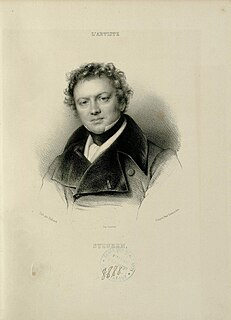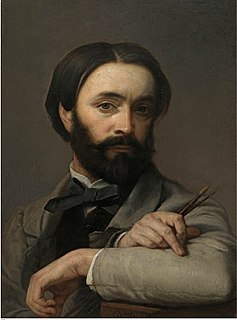
Hermann Gedan (?-?)
Otto Piltz (28 June 1846, Allstedt - 20 August 1910, Pasing) was a German genre painter and illustrator for Die Gartenlaube .

Otto Piltz (28 June 1846, Allstedt - 20 August 1910, Pasing) was a German genre painter and illustrator for Die Gartenlaube .
He was the son of a soap-maker. After an apprenticeship as a decorative painter in Halle, he studied at the Weimar Saxon-Grand Ducal Art School from 1866 to 1871. [1] His teachers were Paul Thumann, Bernhard Plockhorst and Charles Verlat. During the 1870s, he worked at the artists' colonies in Kleinsassen and Willingshausen. [1] He lived in Weimar until 1886, Berlin until 1889, then in Pasing until his death. In 1882, he was appointed a Professor by Grand Duke Charles Alexander. [1] He became a member of the Munich Secession in 1893.
He painted both urban and rural scenes but was especially successful at painting children. He also travelled throughout Thuringia, Hesse, Bavaria and the Tyrol, documenting the local costumes that were already beginning to disappear. He sometimes accompanied a young friend, Franz Marc, on painting excursions to Dachau.
He died of pneumonia, following a heart attack. [1]

Wilhelm Heinrich Otto Dix was a German painter and printmaker, noted for his ruthless and harshly realistic depictions of German society during the Weimar Republic and the brutality of war. Along with George Grosz and Max Beckmann, he is widely considered one of the most important artists of the Neue Sachlichkeit.

Jugendstil was an artistic movement, particularly in the decorative arts, that was influential primarily in Germany and elsewhere in Europe to a lesser extent from about 1895 until about 1910. It was the German counterpart of Art Nouveau. The members of the movement were reacting against the historicism and neo-classicism of the official art and architecture academies. It took its name from the art journal Jugend, founded by the German artist Georg Hirth. It was especially active in the graphic arts and interior decoration.

Tiziano Vecelli or Vecellio, known in English as Titian, was an Italian (Venetian) painter during the Renaissance, considered the most important member of the 16th-century Venetian school. He was born in Pieve di Cadore, near Belluno. During his lifetime he was often called da Cadore, 'from Cadore', taken from his native region.

Henry Clemens van de Velde was a Belgian painter, architect, interior designer, and art theorist. Together with Victor Horta and Paul Hankar, he is considered one of the founders of Art Nouveau in Belgium. He worked in Paris with Samuel Bing, the founder of the first gallery of Art Nouveau in Paris. Van de Velde spent the most important part of his career in Germany and became a major figure in the German Jugendstil. He had a decisive influence on German architecture and design at the beginning of the 20th century.

Saxe-Weimar-Eisenach was a historical German state, created as a duchy in 1809 by the merger of the Ernestine duchies of Saxe-Weimar and Saxe-Eisenach, which had been in personal union since 1741. It was raised to a grand duchy in 1815 by resolution of the Vienna Congress. In 1903, it officially changed its name to the Grand Duchy of Saxony, but this name was rarely used. The Grand Duchy came to an end in the German Revolution of 1918–19 with the other monarchies of the German Empire. It was succeeded by the Free State of Saxe-Weimar-Eisenach, which was merged into the new Free State of Thuringia two years later.

Philipp Otto Runge was a Romantic German painter and draughtsman. Although he made a late start to his career and died young, he is considered among the best German Romantic painters.

The Bauhaus-Universität Weimar is a university located in Weimar, Germany, and specializes in the artistic and technical fields. Established in 1860 as the Great Ducal Saxon Art School, it gained collegiate status on 3 June 1910. In 1919 the school was renamed Bauhaus by its new director Walter Gropius and it received its present name in 1996. There are more than 4000 students enrolled, with the percentage of international students above the national average at around 27 %. In 2010 the Bauhaus-Universität Weimar commemorated its 150th anniversary as an art school and college in Weimar.

Albin Egger-Lienz was an Austrian painter known especially for rustic genre and historical paintings.

Allstedt is a town in the district of Mansfeld-Südharz, in Saxony-Anhalt, Germany. It is situated approximatively 10 km southeast of Sangerhausen.

Charles Auguste Guillaume Steuben, also Charles de Steuben, was a German-born French Romantic painter and lithographer active during the Napoleonic Era.

Princess Marie Luise Alexandrina of Saxe-Weimar-Eisenach was a princess of Saxe-Weimar-Eisenach, by birth, and, by marriage, a princess of Prussia. She was the daughter of Charles Frederick, Grand Duke of Saxe-Weimar-Eisenach and Grand Duchess Maria Pavlovna of Russia.

Otto van Veen, also known by his Latinized name Otto Venius or Octavius Vaenius, was a painter, draughtsman, and humanist active primarily in Antwerp and Brussels in the late 16th and early 17th centuries. He is known for running a large studio in Antwerp, producing several emblem books, and for being, from 1594 or 1595 until 1598, Peter Paul Rubens' teacher. His role as a classically educated humanist artist, reflected in the Latin name by which he is often known, Octavius Vaenius, was influential on the young Rubens, who would take on that role himself.
Gert Heinrich Wollheim was a German expressionist painter later associated with the New Objectivity, who fled nazi Germany and worked in the United States after 1947.

The Weimar Princely Free Drawing School was an art and literature educational establishment. It was set up in 1776 in Weimar by the scholar and ducal private-secretary Friedrich Justin Bertuch (1747–1822) and the painter Georg Melchior Kraus (1737–1806), as part of Weimar Classicism. It was financed by the young Charles Augustus, Grand Duke of Saxe-Weimar-Eisenach and heavily promoted by Goethe, who also taught there. Among its pupils were Charles Augustus's future mistress Karoline Jagemann. It lasted until 1930.
Louise Seidler was a German painter at the court of the grand dukes of Weimar, custodian of their art collection and a trusted friend of the poet Goethe and the painter Georg Friedrich Kersting.

The Grand-Ducal Saxon Art School, Weimar was founded on 1 October 1860, in Weimar, Germany, by a decree of Charles Alexander, Grand Duke of Saxe-Weimar-Eisenach. It existed until 1910, when it merged with several other art schools to become the Großherzoglich Sächsische Hochschule für Bildende Kunst. It should not be confused with the Weimar Princely Free Drawing School, which existed from 1776 to 1930 and, after 1860, served as a preparatory school.

Sir Peter Paul Rubens was a Flemish artist and diplomat from the Duchy of Brabant in the Southern Netherlands. He is considered the most influential artist of the Flemish Baroque tradition. Rubens's highly charged compositions reference erudite aspects of classical and Christian history. His unique and immensely popular Baroque style emphasized movement, colour, and sensuality, which followed the immediate, dramatic artistic style promoted in the Counter-Reformation. Rubens was a painter producing altarpieces, portraits, landscapes, and history paintings of mythological and allegorical subjects. He was also a prolific designer of cartoons for the Flemish tapestry workshops and of frontispieces for the publishers in Antwerp.

Charles Verlat or Karel Verlat was a Belgian painter, watercolorist, engraver (printmaker), art educator and director of the Antwerp Academy. He painted many subjects and was particularly known as an animalier and portrait painter. He also created Orientalist works, genre scenes, including a number of singeries, religious compositions and still lifes.

Edmund Charles Tarbell was an American Impressionist painter. A member of the Ten American Painters, his work hangs in the Boston Museum of Fine Arts, Metropolitan Museum of Art, National Gallery of Art, Smithsonian American Art Museum, Corcoran Gallery of Art, DeYoung Museum, National Academy Museum and School, New Britain Museum of American Art, Worcester Art Museum, and numerous other collections. He was a leading member of a group of painters which came to be known as the Boston School.

Willem Linnig the Younger was a Belgian painter and engraver who is best known for his history and genre scenes, landscapes and still lifes. He taught for some time at the Fine Arts School of Weimar.
| Wikimedia Commons has media related to Otto Piltz . |